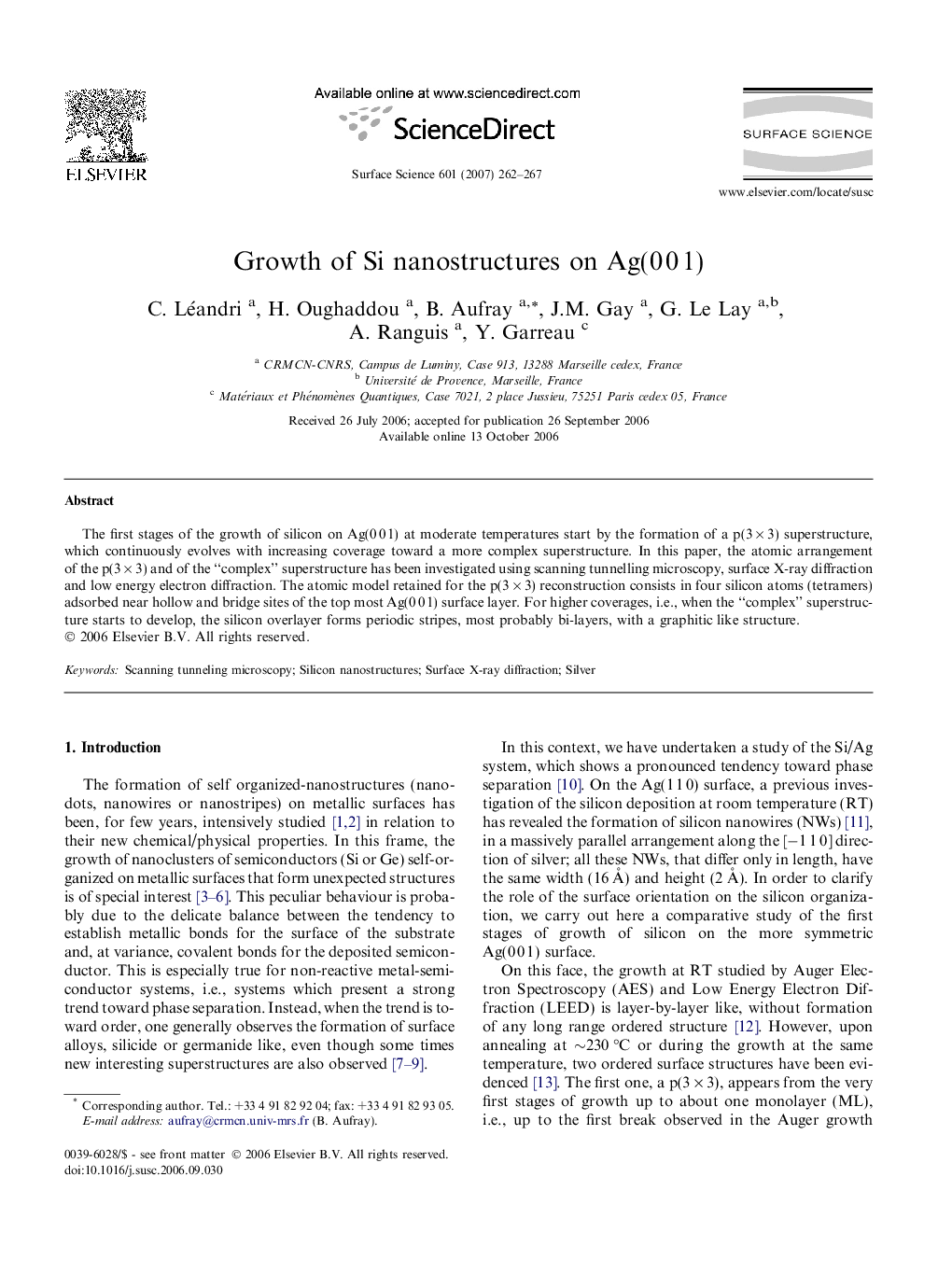| Article ID | Journal | Published Year | Pages | File Type |
|---|---|---|---|---|
| 5426251 | Surface Science | 2007 | 6 Pages |
The first stages of the growth of silicon on Ag(0Â 0Â 1) at moderate temperatures start by the formation of a p(3Â ÃÂ 3) superstructure, which continuously evolves with increasing coverage toward a more complex superstructure. In this paper, the atomic arrangement of the p(3Â ÃÂ 3) and of the “complex” superstructure has been investigated using scanning tunnelling microscopy, surface X-ray diffraction and low energy electron diffraction. The atomic model retained for the p(3Â ÃÂ 3) reconstruction consists in four silicon atoms (tetramers) adsorbed near hollow and bridge sites of the top most Ag(0Â 0Â 1) surface layer. For higher coverages, i.e., when the “complex” superstructure starts to develop, the silicon overlayer forms periodic stripes, most probably bi-layers, with a graphitic like structure.
